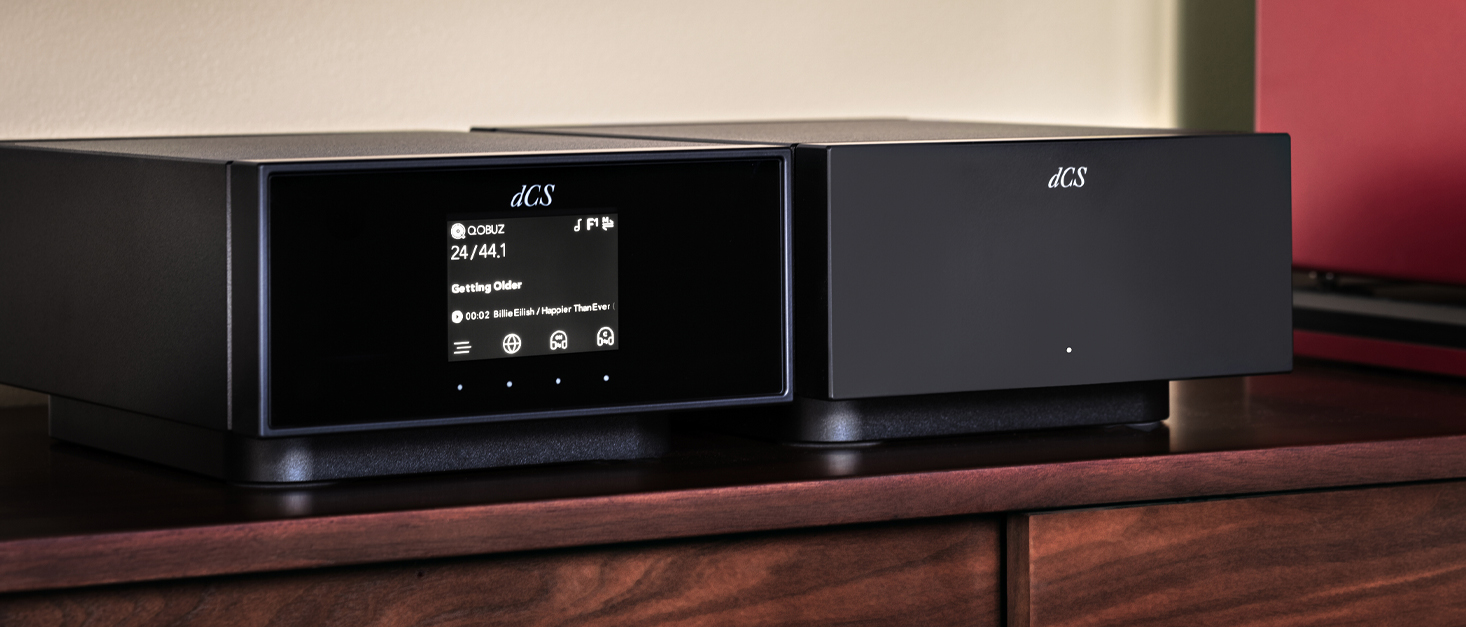
2.0: Enhancing the dCS Experience
The Lina Network DAC is the latest dCS product to receive a 2.0 software upgrade, bringing several new features and sonic benefits to owners. Here, we reflect on the evolution of our 2.0 software and explore how it has enhanced people’s listening experience
Tags: Lina, Design & Craft, Technology & Innovation,There are several strands of work that lead to innovation at dCS. Often, we develop new technologies and platforms in the course of designing new products. When creating the Lina Network DAC, for example, we devised a foldable circuit board that houses over 2,000 electrical components. This allowed us to deliver the core features of a dCS DAC in a much smaller chassis, without compromising on sound or performance – resulting in the creation of our most compact series yet.
We also develop novel solutions in response to specific challenges: our Expanse headphone optimisation feature, available with the dCS Bartók, Rossini and Lina DACs and Rossini Player, came out of a project to explore how we could resolve some of the issues inherent in traditional crossfeed methods, and provide a more immersive experience for headphone listeners.
Alongside this, we devote a great deal of time to exploring new ideas, with no defined outcome or criteria. This open-ended exploration is a critical part of our work: one that begins with looking at existing dCS technologies and products and asking ourselves, what and where can we improve?

2.0: Vivaldi, Mappers, and FPGAs
Our 2.0 software, first developed for the Vivaldi DAC, came out of one such exercise. The Vivaldi's launch marked the start of a new era for dCS. Through extensive development, we devised an all-new architecture that allowed us to further enhance the capabilities of our Ring DAC (the unique digital-to-analogue conversion system found in all dCS DACs) and deliver a new level of audio performance.
This architecture is based around the use of powerful Field Programmable Gate Arrays, or FPGAs – flexible firmware that can be reprogrammed to deliver new features, functions and improvements. FPGAs have always been a core part of dCS DACs: using reprogrammable firmware rather than inflexible DAC chips that cannot be recoded gives us more scope to continue enhancing products throughout their lifespan, adding new benefits and features via updates to the software stored on FPGAs. The Vivaldi’s launch, however, marked the first time we were able to use FPGAs for the mapping algorithm, or Mapper, that determines how data is presented to the Ring DAC’s core.
The Mapper is responsible for decoding data and distributing digital signals to the Ring DAC. (See our PDF guide for more information on the Ring DAC’s unique design.) It uses a complex set of algorithms to determine which current sources must be turned on and off at any given point to generate the correct signal, in effect driving the Ring DAC's physical operation.
The original Mapper used in the Vivaldi was the culmination of several years of work: a careful process of refinement to achieve the optimum trade-off between noise, distortion and jitter. It worked extremely well, but our engineers are firm believers that there is always room for improvement.... Soon after the Vivaldi's release, we continued to explore how we could once again improve the Mapper’s performance and, in turn, the musical experience the Vivaldi provides.
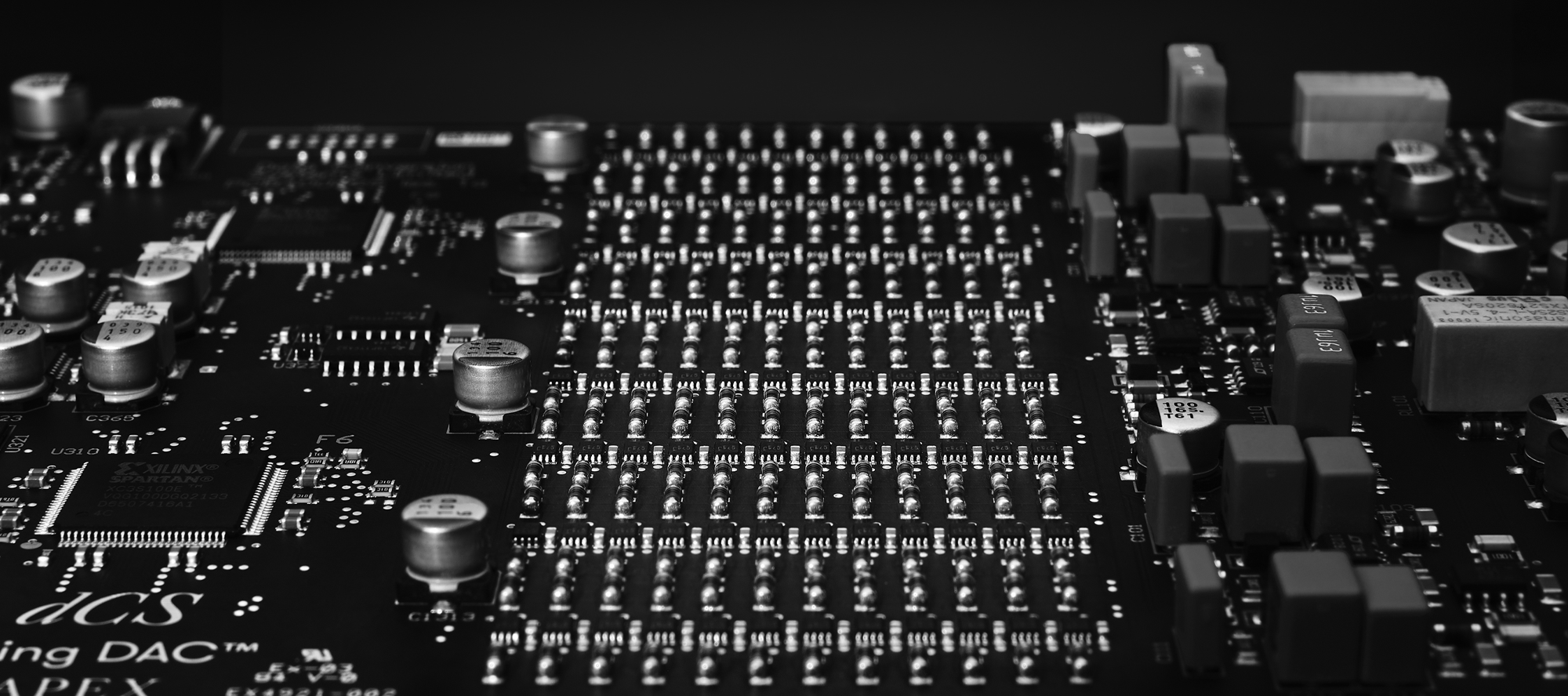
A major update arrives
Through extensive development, we created two new Mapper settings that operate the Ring DAC at double speed. These settings were made possible through the use of a new control board developed for the Vivaldi DAC, which allowed us to increase speed without incurring additional jitter.
This, in turn, enabled us to improve DSD upsampling operations, and introduce a new DSD filter option – developments that brought significant sonic and measured improvements. Listening tests carried out during the development process revealed enhanced dynamics and resolution, a more three-dimensional soundstage, and an even more immersive musical experience.
"This is not a tiny upgrade.... How they sing, how they play - their intentions seem more obvious. Their presence in the room seems more real"
Improvements were made available to Vivaldi owners via a 2.0 software upgrade. All Vivaldi owners had to do was run an update CD, and the new settings would be available to access on their DAC.
We soon received emails and messages from owners who had noticed profound changes after installing the 2.0 upgrade, with several customers writing and calling to tell us it had all aspects of sound. "This is not a tiny upgrade," one owner wrote to us. "Soundstage depth and width increased, and a quietness has settled between the notes to reveal more of the artist’s work. How they sing, how they play - their intentions seem more obvious. Their presence in the room seems more real." Others noted a sharper sense of acoustics, more controlled bass, and more noticeable details, from strokes of the bow on a violin, to dampers hitting the strings on an acoustic piano.
These comments were echoed in reviews: "2.0 adds even more resolution. I think of the term as encapsulating everything about the music and the recording, from the rhythmic flow and movement, right through to the instrumental detail itself," wrote Chris Thomas for hi-fi+. The Audio Beat’s Marc Mickleson agreed: "The Vivaldi 2.0 system revealed new facets of the music, and itself, with nearly every recording I played. I was bowled over by it, in fact, and the more I listened, to both new and well-known recordings, the more impressed, and covetous, I became."
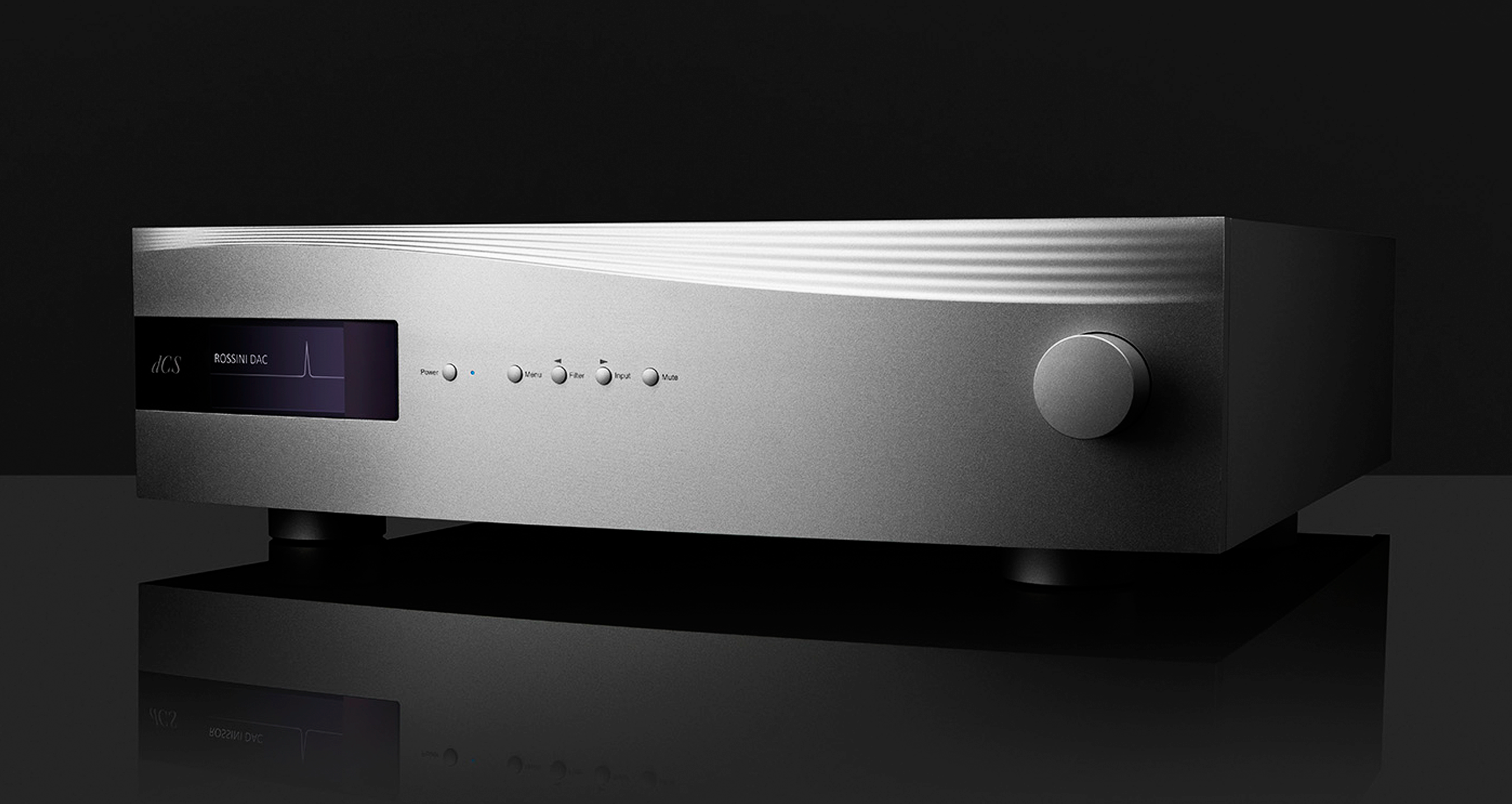
2.0 for Rossini, Bartok, and Lina
dCS Rossini received the 2.0 upgrade soon after. Alongside the benefits introduced with Vivaldi 2.0, the Rossini update brought additional PCM and DSD filters to the Rossini DAC and Rossini Player – features which had previously been exclusive to the Vivaldi DAC.
These additional filters allowed us to offer Rossini listeners more control over their system’s performance, giving them the option to select the filters that best suit their music, system and listening preferences. (We’ll be sharing more information on dCS filters over the next few weeks – for now, you can read more about their role in digital audio here.) Providing these in addition to the new Mapper settings allowed us to once again deliver significant sonic benefits for listeners.
Following the launch of Rossini 2.0, we received positive feedback from reviewers, critical listening experts and customers who felt the update delivered significant improvements, with one Rossini DAC owner noting: "2.0 sounds more open, more spacious, more relaxed, and more detailed!... It is a whole new DAC, with all of the qualities of 1.0 improved."
Bartók 2.0 followed in 2022, and on October 17, 2023, the dCS Lina Network DAC became the latest series to benefit from a 2.0 upgrade. The Lina 2.0 upgrade brings the aforementioned Mapping algorithms, upsampling improvements, and new PCM and DSD filters to Lina Network DAC owners – meaning listeners now have access to the same range of filters and Mapper settings as those with a Vivaldi, Rossini or Bartók DAC.
The upgrade also brings a new balance control function that enables listeners to adjust the volume of left and right channels in isolation when listening with headphones or loudspeakers, plus a text setting that makes it possible to increase the size of track titles on the Lina Network DAC’s display, making them easier to read when at a distance.
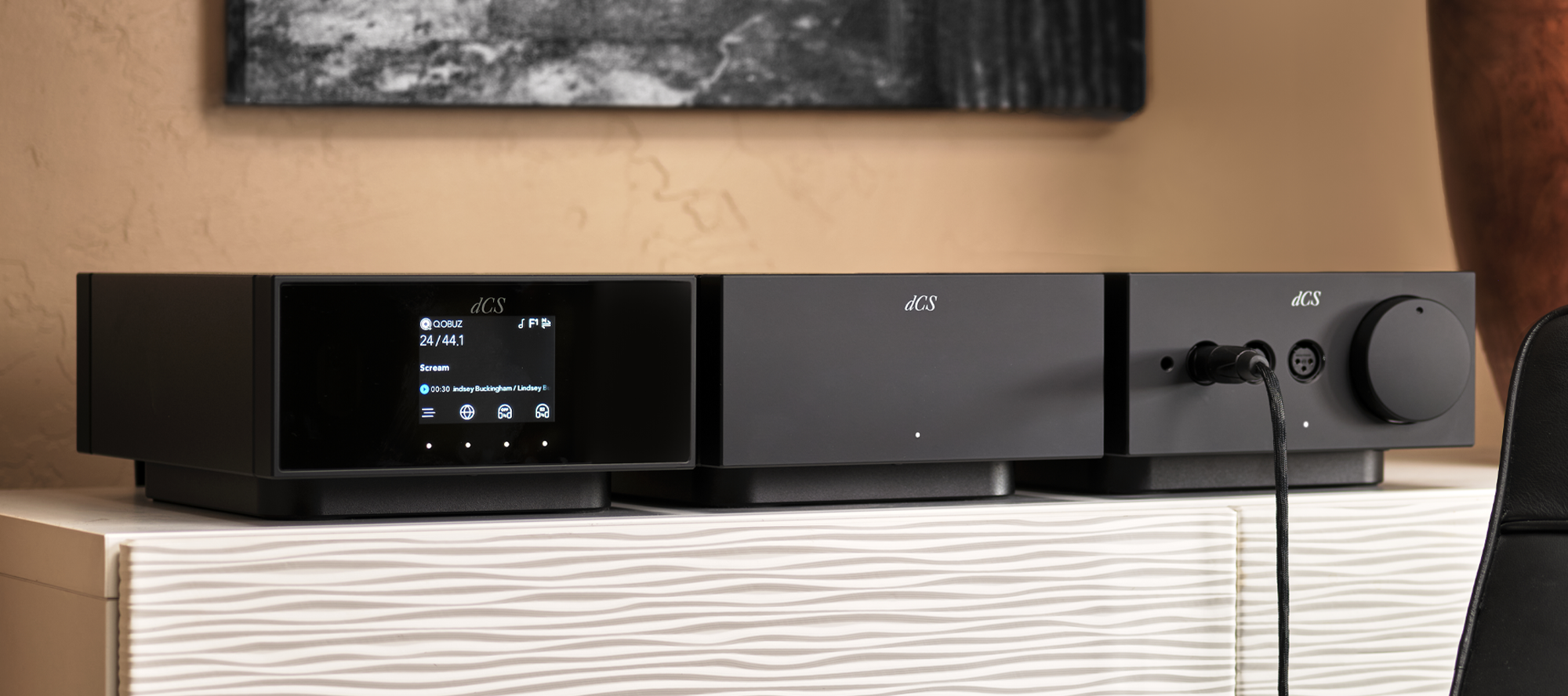
Lina’s evolution
Lina 2.0 is the second major software update delivered for the Lina Network DAC. In March 2023, we released Lina 1.1, delivering additional volume control and volume lock features that enable the DAC to be used in systems without a pre-amp, and to better match gain to connected headphone and power amplifiers.
The DAC’s evolution reflects our desire to keep advancing our products. It also reflects the diverse needs of Lina listeners, and the feedback we’ve received from owners following Lina’s launch.
When we designed dCS Lina, we set out to create state-of-the-art components that delivered exceptional sound and an intuitive, accessible user experience. We developed a streamlined interface and new menu structure with simplified controls for the Lina Network DAC, and launched with one Mapper and two PCM filter options for added ease of use.
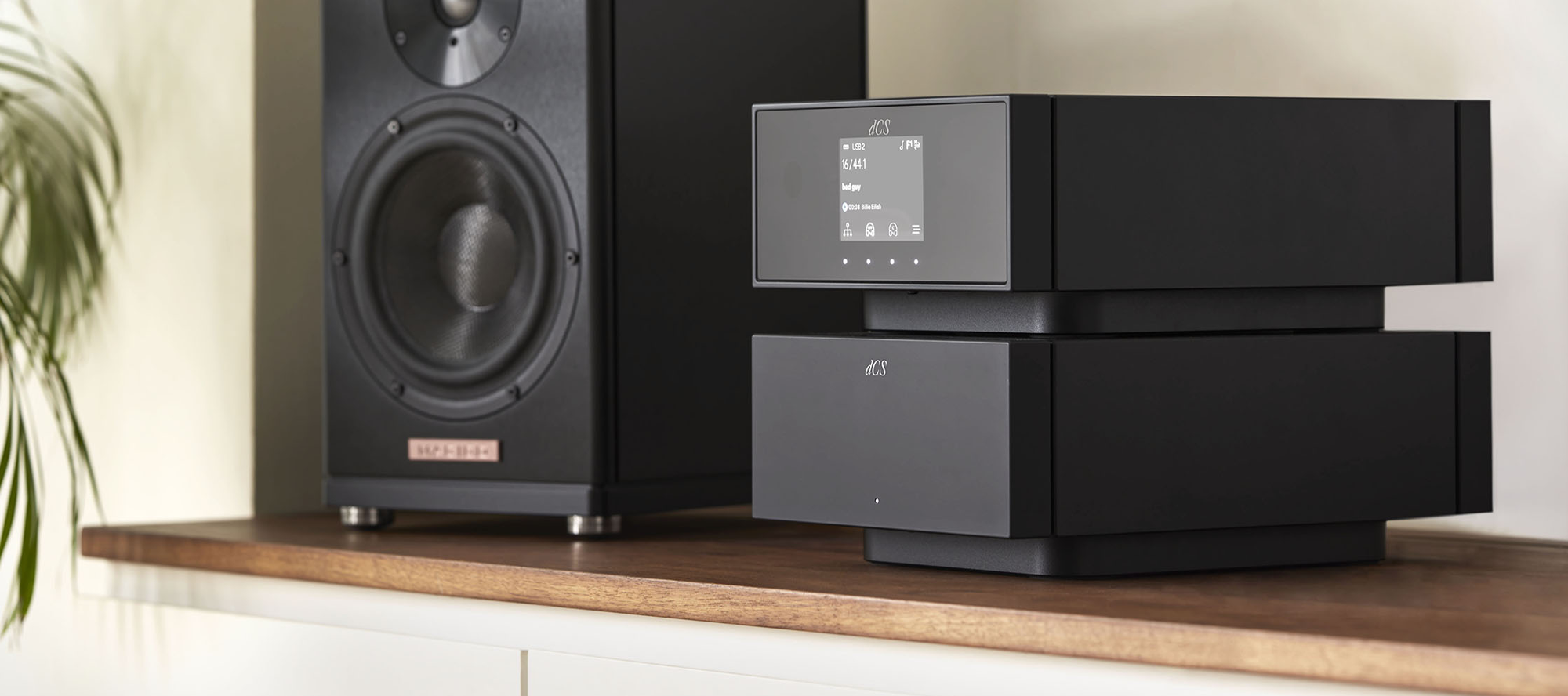
Over time, as we observed how people were using their Lina DACs, we felt there was an opportunity to deliver additional features and benefits, and give listeners more control over the DAC’s performance, without complicating the user experience. After launching the Lina series, we noticed the DAC had become popular with existing dCS owners and two-channel audio enthusiasts, as well as headphone listeners and those who had never before experienced our products. Each month, we saw people adding Lina DACs to a multitude of setups, from desktop headfi systems, to professional studios and hybrid loudspeaker / headfi setups.
Through our 1.1 and 2.0 upgrades, we’ve been able to deliver an even better experience for those using their Lina DAC as part of a two-channel audio setup, while bringing the full range of dCS Mappers and Filters to all Lina DAC owners. Those who are satisfied with their DAC’s current configuration don’t have to change a thing, but those who would like to access the new features can do so through the DAC’s menu or the dCS Mosaic Control app.
Delivering 2.0: Testing & Development
As dCS Technical Director Andy McHarg points out, delivering major software upgrades is a significant undertaking for the engineering team at dCS. Each product is unique: our Vivaldi, Rossini and Lina DACs, for example, all have different hardware platforms, and different software that drives them, which means it is not a simple case of replicating changes across the product line.
“While the Ring DAC board is very similar, the hardware and the thing driving it is different. The basic concepts are the same, the maths is the same, but how you do it is different (for each system). Lina, for example, has a different control board to all other dCS DACs, and the latches in the dCS Ring DAC are connected directly to the main FPGA, so that requires a different approach,” he explains.
"Usually, it’s a process of, Can I make this work? Maybe. Can I make this work in a spreadsheet? Perhaps. Can I make this work in the product? – and all those stages present different challenges."
When working on features that affect a system's sonic performance, such as the filter options or mapping algorithms delivered with our 2.0 upgrades, our development process begins with theoretical exploration, and soon moves into testing the real-world effect of changes or updates. What might seem like a sound idea in principle can have unexpected outcomes when implemented in the real world, so it’s vital that we test the actual impact of proposed upgrades within products as soon as possible. “You have the theory, and very often the theory is wrong,” explains Andy. “Usually, it’s a process of, Can I make this work? Maybe. Can I make this work in a spreadsheet? Perhaps. Can I make this work in the product? – and all those stages present different challenges.”
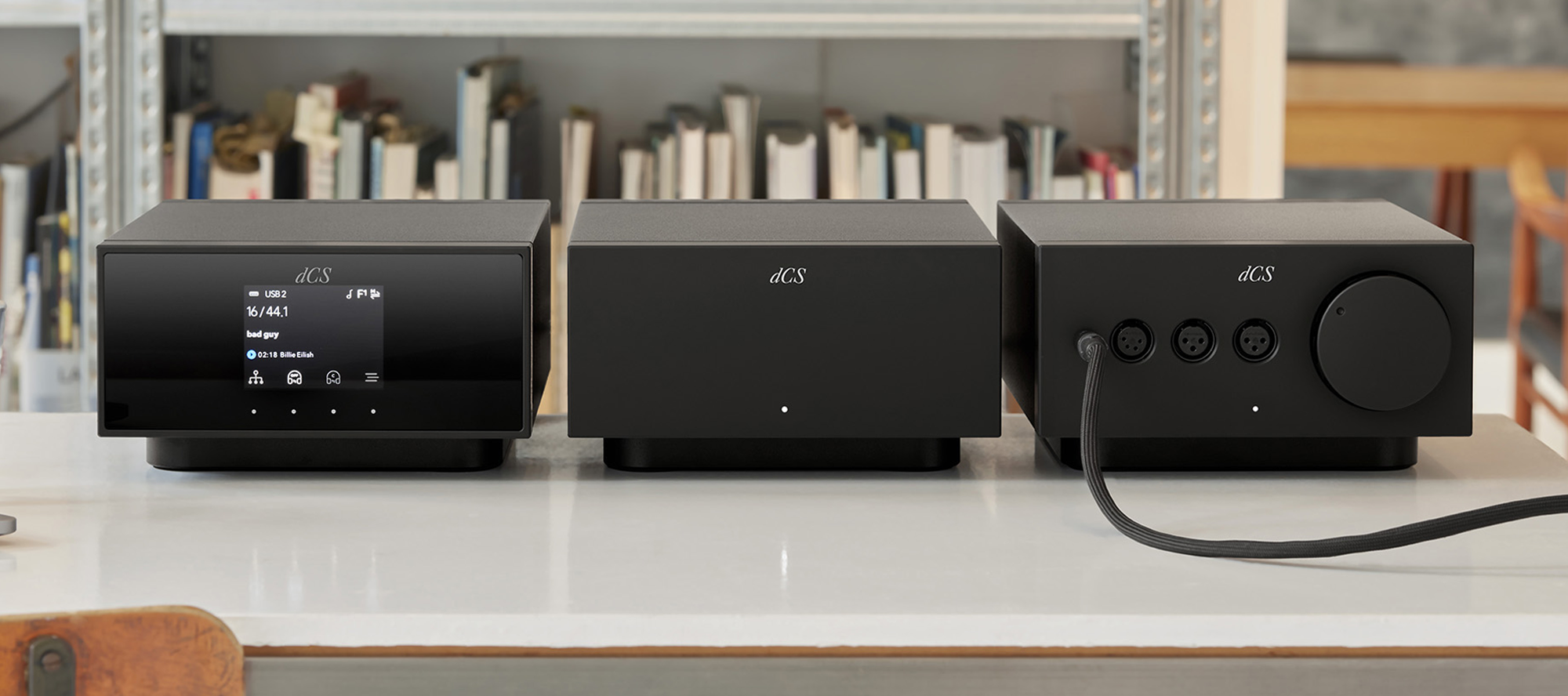
Listening & Reviewing
Once we are satisfied that our proposed innovations are viable and offer clear benefits from a technical standpoint, it’s on to listening tests, where we invite a group of experts (including musicians, audiophiles, and recording professionals) to give their feedback. This process helps us to confirm that our latest innovations provide notable benefits for listeners – a crucial requirement for all dCS upgrades. It also helps us to refine our work: when developing the new mapping algorithms for the Vivaldi DAC, for example, we presented six variations, and used subjective feedback to determine which two settings delivered the best results overall.
In the course of developing major software upgrades, we also make time to review a product’s performance and feature set, and decide if there are additional benefits we can deliver as part of the upgrade. This could be a feature designed to support a new audio format, or streaming service, such as the dedicated MQA filter delivered with Rossini 2.0, or a new function that helps to improve the user experience, such as the text size feature delivered with Lina 2.0.
Enhancing the dCS experience
Delivering major product upgrades will always be an important part of our work at dCS. We believe our systems should delight and inspire listeners for many years to come and provide a state-of-the-art experience throughout their lifespan. That means creating products that can adapt to suit changing needs and demands and reflect the latest technological advancements. We also believe our customers' investment should be rewarded over time, with new features and benefits made available as and when we develop them.
These updates are made possible through a carefully designed architecture: the use of FPGAs – combined with the unique relationship between dCS hardware and software, and the modular construction of our systems – means there are few aspects of a product’s performance that we cannot adjust or improve, and no limit to the number of updates we can make. This is true of all DACs in the dCS range, from Lina through to Vivaldi. This flexibility has allowed us to deliver a number of substantial software and hardware upgrades to our current product series – from 2.0 through to APEX – and we'll continue exploring how we can push our technologies and further enhance the dCS experience in years to come.
2.0: A Closer Look
You can learn more about the Lina Network DAC 2.0 upgrade here.
We'll share more information about the features offered with Lina 2.0 on the dCS Edit over the next few weeks. We’ll also discuss the role of dCS filters and answer common questions regarding dCS filters and Mappers.
Subscribe to the dCS Mailing List to receive update and the latest articles straight to your inbox.












